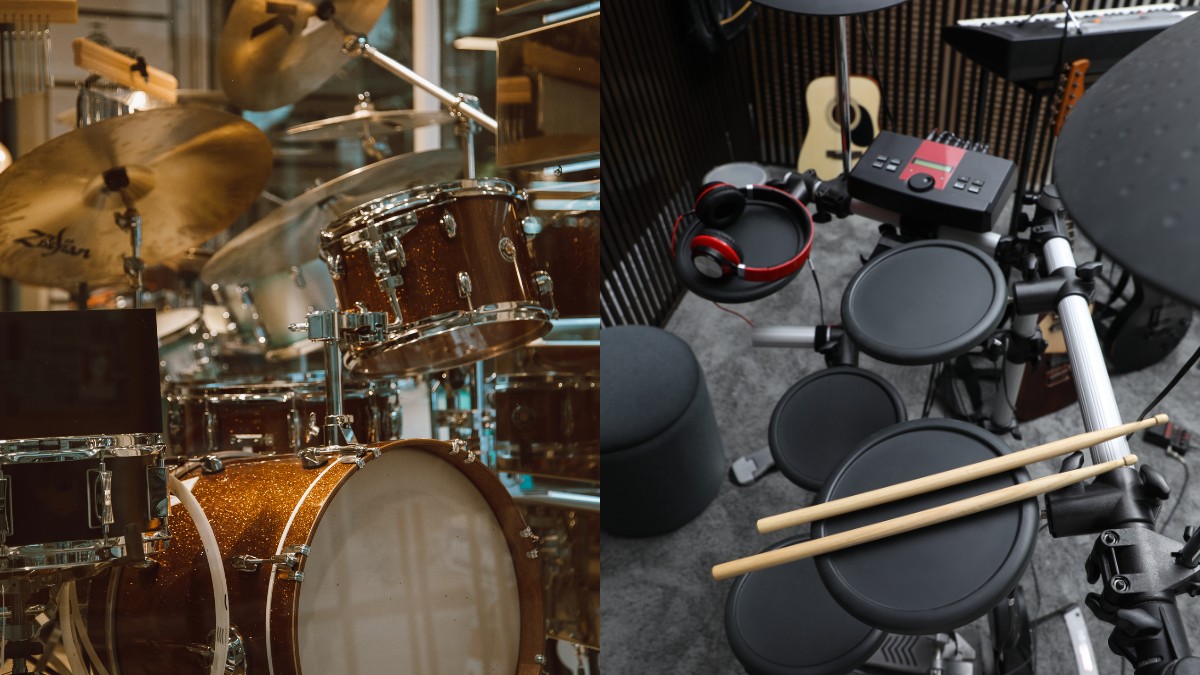The Best Drummer Workouts (Strength, Flexibility, Cardio)
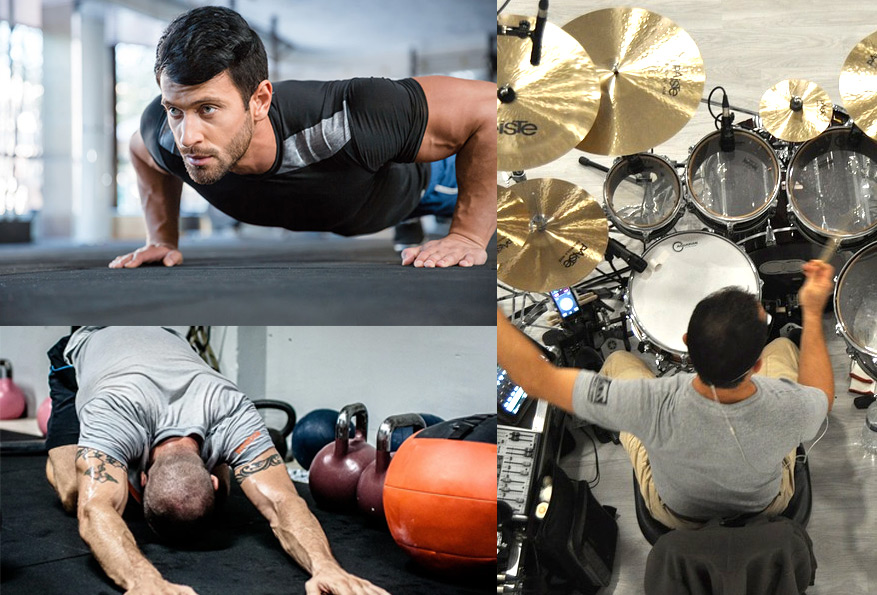
The ideal drumming workout is balanced between cardio, strength, and flexibility.
In this article, we’re going to talk about these in detail and give you some training routines that you can get started with right away.
We will focus on the following:
- Strength – You should strive for high levels of functional strength, with a particular emphasis on core strength and big muscle groups. We’re going to talk through some proven strength exercises that you should build into your training routine.
- Flexibility – Unfortunately, drummers have to spend a lot of time sitting. Drummers should focus on overall flexibility as it can help prevent serious drumming injuries throughout your body. Just a few minutes a day can make a massive difference.
- Cardio – Cardio exercises can greatly improve your overall fitness, endurance, and heart health, which can keep you going for much longer behind the kit.
Note: Despite what some musicians say, weight lifting will NOT slow you down behind the kit, unless you are following a hardcore bodybuilding diet and training routine. This article is focused on functional strength, you’ll build some muscle along the way, but it will serve to improve your drumming rather than get in the way of it!
Disclaimer: We recommend that you consult with your physician before beginning any exercise program. We are not a licensed medical care provider and this information should not be interpreted as medical advice.
Strength
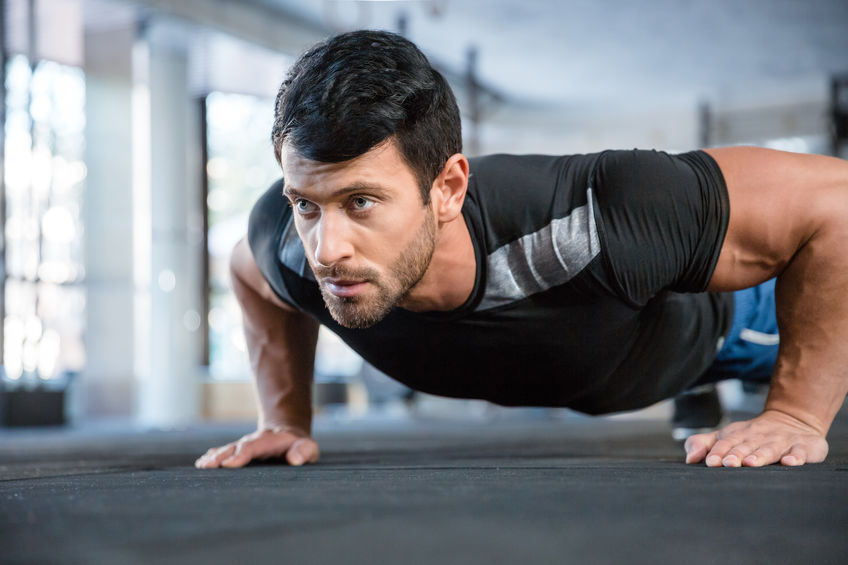
Beginner suggestion: Full-body routine (bodyweight)
Experienced with weights: Full-body routine (barbell)
You can improve your overall body strength by doing functional bodyweight movements such as:
- Push-ups
- Squats
- Lunges
- Planks
- Side-planks
- Bridge
The video below is a great beginner body weight workout that is very accessible for those that don’t have much experience with strength training.
Later on, you can also add dumbbells or barbell weights to the movements to increase the intensity and strength gains from them.
I used to hate these movements, but after some training, I realized the overall strength benefits of them and began to welcome them into my life!
Strength training does not need to be an intimidating activity. Start within your limits and slowly increase the weight, reps, and sets from there.
Go for a full-body strength training routine
Using big compound movements is a great way to exercise almost all of the big muscle groups of your body within a short space of time.
If you want to take your training to the next level, you can incorporate a barbell into the mix. A great routine involves the following:
- Barbell squats
- Barbell deadlifts (or Romanian deadlifts if you don’t have the hamstring flexibility yet).
- Bend over rows
- Pull-up OR Lat pull-downs.
- Bench press
- Shoulder press / military press
We’ve included a great beginner guide on how to properly exercise with a barbell:
These exercises take quite a lot of effort. This is because you are recruiting big muscle groups for each lift. This is a good thing!
You might be tempted to go for isolation exercises instead in the weight room (such as bicep curls, tricep extensions, etc), but they only have limited gains towards small parts of your body. If you want to get serious functional strength gains, then go for big compound exercises mentioned above. If you have extra time and willingness, then feel free to do the isolation exercises too, but don’t ignore the compound movements!
We highly recommend that you get a personal trainer or a staff member in your gym to show you how to use barbells and how to perform these lifts safely.
Make sure to engage your core at all times and only lift what is within your limits.
Always start at a reasonable weight and work your way up from there.
Pushing way above your weight is called ego lifting and you will get injured.
So when you’re going to the gym, leave your ego at the door, lift within your bounds and keep improving with great consistency.
Diet
If you’re lifting heavy weights, you need to increase your protein intake, so make sure to check out this list of great protein-rich foods soon after your workout to maximize your strength gains.
It’s very difficult to talk about workouts without talking about your food intake. Your food is this is the fuel for your body, and this is used to build strength in your body as you are recovering from workouts.
You need to have a good quality of food intake to be able to recover successfully from workouts.
Flexibility and Core Training
Suggestion: Daily Yoga sun-salutations
Flexibility and core training are often left out of drumming workouts. However, these are two very important things you should focus on.
Yoga or pilates, will both increase your flexibility and improve your core strength. These disciplines improve your range of motion and strengthen many muscle groups, particularly improving your core strength. This can do wonders for fixing nagging injuries, resolve back and neck pain, and many other issues.
Yoga can get unfairly dismissed by people. Poses such as downward-facing dog and Warrior II may seem silly until you try them!
I couldn’t believe how DIFFICULT my first yoga class was! It helped identify major areas of tightness in my hamstrings and back muscles. Addressing these yielded significant benefits in my everyday life.
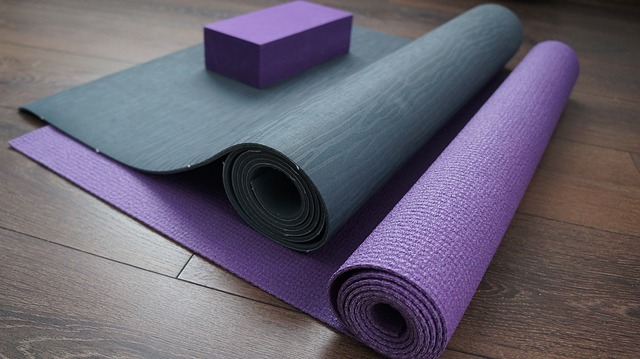 Suggestion: Practice a few sun salutations. Every morning, then this will greatly improve your flexibility, your posture, and your core strength.
Suggestion: Practice a few sun salutations. Every morning, then this will greatly improve your flexibility, your posture, and your core strength.
Good posture is one of the most important things for a drummer.
Bad posture could greatly damage your chances of being able to drum over a long period of time. Ask any older drummer, and they will tell you that sitting straight is a really important thing to do when you’re on the drums.
Make sure to engage your core when you’re doing any of these flexibility routines and do not roll your back unless that is part of the flexibility exercise
Cardio

Suggestion: Pick any cardio activity that you can perform consistently and will get your blood flowing.
Drumming can be a tiring activity, and you need the endurance to keep up long sessions.
This is true for almost all styles of drumming, but it’s particularly prevalent for those that play drums with fast rhythms and/or at high tempos.
Cardio activity can help keep you going for longer and with higher levels of ease. When you’re more comfortable playing, you can focus more on your technique and style and just enjoy yourself a whole lot more.
Some great examples of cardio exercise are:
- Running
- Brisk walking
- Hiking (or using a step mill or StairMaster in your gym)
- Cross trainer or elliptical machine
- Cycling (A road bike, stationary bike, or spin bike)
- Rowing machine
- And any other cardio equipment that you can find.
Keep in mind is that the most important thing is to get your heart going and to be able to do so for at least 20 minutes at a time.
The important thing here is consistency. Try to do some cardio activity at least twice or three times per week.
Cardio exercise can seem like a drag at first. Some love it and some hate it, but once you get into a good mindset, it can become a very rewarding activity, and it can also reduce stress levels, which improves other parts of your life.
It’s great to do cardio exercise early in the morning because it gets you set up for the day and boost your metabolism.
Drumming warm-ups
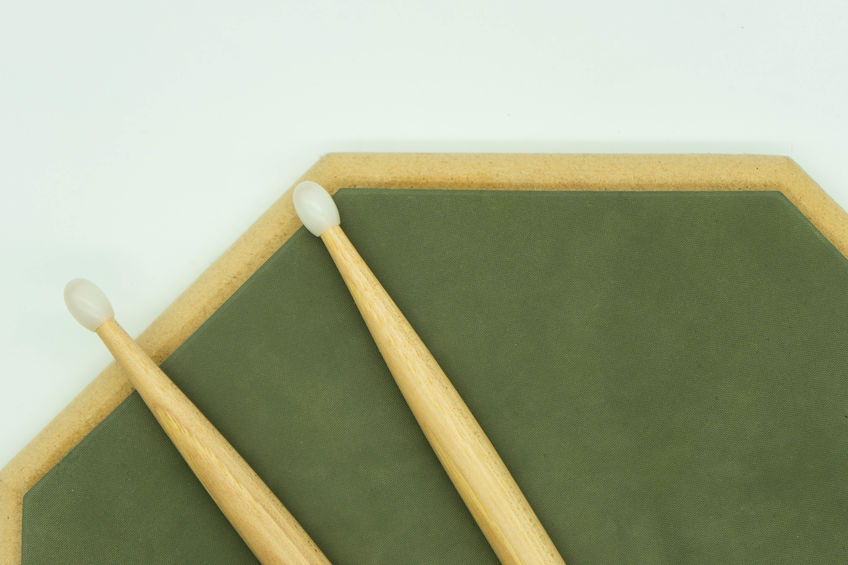
Do some warm-up exercises before you get behind your drum set.
For example:
- Try some general warm up exercises on your practice pad.
- Stretch out your back a bit through yoga sun salutations or some other flexibility exercise.
- Go for a brisk walk to loosen out a bit.
li>
Stretch out your limbs a little bit. What type of warm up you do, is very dependent on your own body, so make sure to always listen to your body and become very aware of any niggles or injuries that you might be developing.
For example, if you have pains in your wrists, then keep an eye on these and do some warm-up exercises before hitting the drum set next time.
If this does not help, then start working on your drumming technique, loosen your grip and even adjust your grip style.
If you want to stay healthy and fluid behind the kit, you need to strike a balance between having great physical health, flexibility, strength, and great drumming technique
Summary
We hope this has served as a great information source to help you build a drumming workout to suit your needs.
You need to keep a good balance between all of the different types of exercises.

